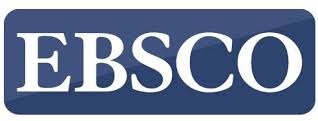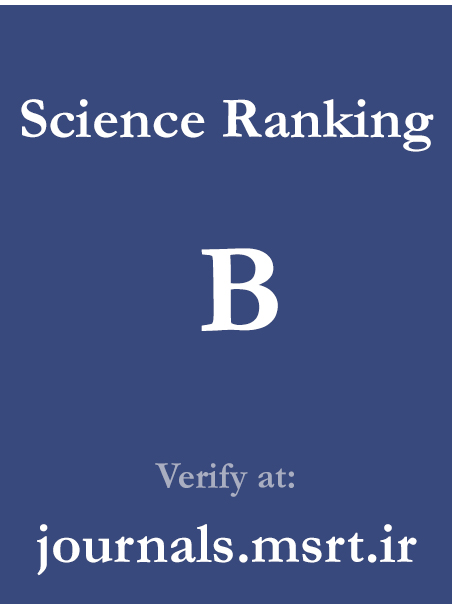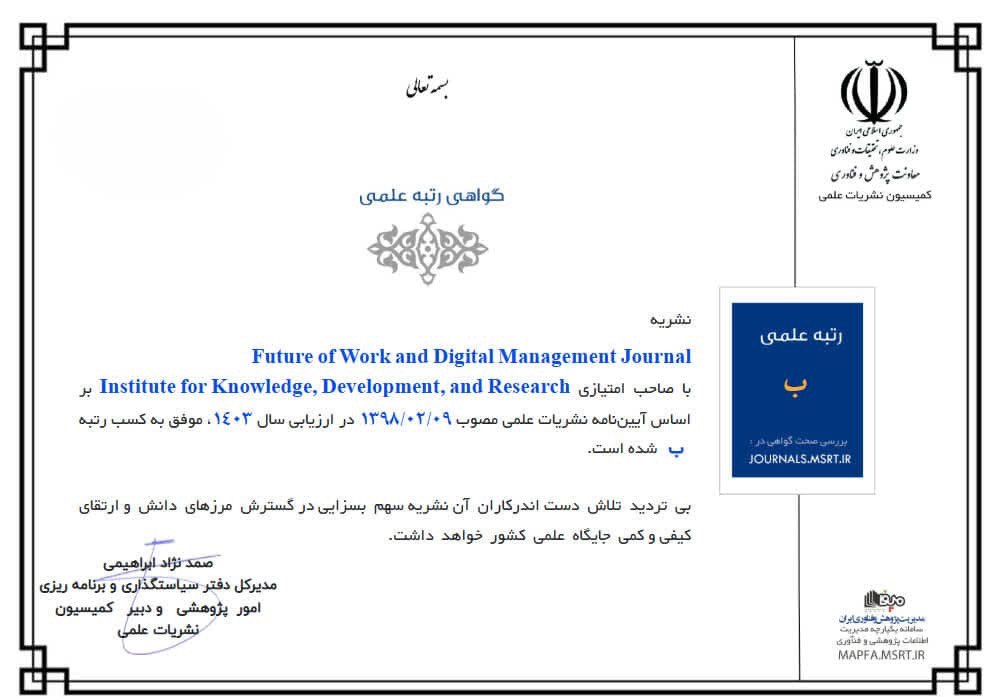Design and Validation of a Productivity Evaluation Model in Media
Keywords:
validation, productivity management, media, virtual spaceAbstract
This study aims to design and validate a productivity evaluation model in sports media in Iraq. The research is classified as a quantitative-descriptive study with a structural equation modeling (SEM) approach. The statistical population included all Iraqi faculty members, experts, and sports journalists. Based on the Morgan Table, the sample size was determined to be 384 participants, who were selected through simple random sampling. The research instrument was a researcher-made questionnaire developed based on the relevant literature and theoretical frameworks, whose validity was confirmed through face validity. Reliability was also calculated using Cronbach’s alpha, which yielded a coefficient of 0.89. The primary method of data analysis was factor analysis modeling, performed using AMOS software. The findings indicated that the productivity evaluation model in Iraqi sports media demonstrated good model fit (P > 0.05). Therefore, it can be concluded that sports media in Iraq can benefit from the results of this study to enhance their productivity.
Downloads
References
[1] M. A. Halim et al., "The Relationship Between Human Resources Management Practices (HRMp) and Employee Engagement Among Staff at Universiti Putra Malaysia (UPM) Sports Centre," in Proceedings of the 1st International Summit Conference on Exercise Science, Sports Management, Outdoor Recreation, and Physical Education, ExSPORT 2024, 28th-29th August, Malaysia, 2024, pp. 216-218.
[2] J. Jumawan, N. N. Sawitri, and S. Supardi, "Productivity and Sustainability Organization: Leadership, Motivation, Competence," Dinasti International Journal of Management Science (DIJMS), vol. 4, no. 5, 2023.
[3] L. Caliendo, G. Mion, L. D. Opromolla, and E. Rossi-Hansberg, "Productivity and organization in Portuguese firms," Journal of Political Economy, vol. 128, no. 11, pp. 4211-4257, 2020, doi: 10.1086/710533.
[4] M. Lakhwani, O. Dastane, N. S. M. Satar, and Z. Johari, "The impact of technology adoption on organizational productivity," The Journal of Industrial Distribution & Business, vol. 11, no. 4, pp. 7-18, 2020, doi: 10.13106/jidb.2020.vol11.no4.7.
[5] S. Mohammadi, "Organizational culture and its impact on organizational productivity," International Journal of Human Capital in Urban Management (IJHCUM), vol. 5, no. 3, pp. 267-276, 2020.
[6] Z. Morovati, F. Fathi, and Z. Barzegar, "The causal relationship between organizational culture and organizational silence with human resource productivity, mediated by organizational citizenship behavior among municipal employees," Productivity Management, vol. 12, no. 46, pp. 69-96, 2018.
[7] M. Moharramzadeh and M. S. Nouri, "The effect of strategic thinking on employee productivity in the sports and youth departments of western Iran: The mediating role of organizational agility," Human Resource Management in Sport, vol. 7, no. 2, pp. 225-244, 2020, doi: 10.22044/shm.2020.8434.1994.
[8] M. Oliveira, M. Sousa, R. Silva, and T. Santos, "Strategy and human resources management in non-profit organizations: Its interaction with open innovation," Journal of Open Innovation: Technology, Market, and Complexity, vol. 7, no. 1, p. 75, 2021, doi: 10.3390/joitmc7010075.
[9] Y. Dong, "Empirical study on the green transformation of the sports industry empowered by new infrastructure from the perspective of the green total factor productivity of the sports industry," Sustainability, vol. 14, no. 17, p. 10661, 2022, doi: 10.3390/su141710661.
[10] K. Shahbazi and S. Alizadeh, "The effect of government expenditures on total factor productivity in Iran's agricultural sector," Scientific-Research Quarterly of Agricultural Economics Research, vol. 10, no. 38, pp. 33-48, 2018.
[11] A. Bejani, J. Shahlaei, S. Keshkar, and F. Ghafoori, "Construction and validation of a questionnaire on managerial competencies in sports organizations," Human Resource Management in Sport, vol. 5, no. 2, pp. 264-266, 2018.
[12] S. Ghanbari and K. Zandi, "Designing a systematic model of factors influencing the transfer of learning to the workplace," Productivity Management, no. 45, p. 116, 2018.
[13] Z. Beigomi, M. Hamidi, N. Sajadi, and H. Henry, "The impact model of HRM policies and their consequences on the organizational performance of the Ministry of Sport and Youth," Human Resource Management in Sport, vol. 5, no. 2, p. 164, 2018.
[14] A. F. Anggraheni and B. Haryanto, "The Effect of Social Media Marketing on Brand Equity With Brand Experience as Mediation: Study on Uniqlo Product Users," European Journal of Business Management and Research, vol. 8, no. 3, pp. 101-103, 2023, doi: 10.24018/ejbmr.2023.8.3.1934.
[15] A. Singh, "Association between organizational norms and employee productivity in higher education," Journal of Applied Research in Higher Education, vol. 12, no. 2, pp. 271-295, 2020, doi: 10.1108/JARHE-01-2019-0014.
[16] M. Despard, "Promoting staff financial well-being in human service organizations: The role of Pay, benefits, and working conditions," Human Service Organizations: Management, Leadership & Governance, vol. 47, no. 5, pp. 404-421, 2023, doi: 10.1080/23303131.2023.2253862.
[17] J. Y. Lee, "Effects of Customer Relationship Management of Productive Welfare Institutions on Management Performance," Journal of Convergence for Information Technology, vol. 9, no. 10, pp. 64-70, 2019.
[18] S. Ahmadi, A. Khojasteh, and A. Alinejad, "The effect of customer relationship management on productivity and customers' return in sports media of Kermanshah province," Contemporary Research in Sports Management, vol. 9, no. 17, pp. 109-120, 2019.
[19] Y. W. Yap and S. Suwarno, "Analysis of the Influence of Social Media Marketing and Co-Creation Behavior on Brand Equity Through Mediation Brand Experience of Automotive Products in Indonesia," E3s Web of Conferences, vol. 571, p. 06004, 2024, doi: 10.1051/e3sconf/202457106004.
[20] A. H. Musa, F. N. Baharuddin, P. M. Antara, S. M. Selamat, B. Raja Mayang Delima Mohd, and A. Ali, "Viral Marketing and Social Media Influencer Roles in Purchasing Skincare Product: A Conceptual Paper," International Journal of Academic Research in Business and Social Sciences, vol. 14, no. 5, 2024, doi: 10.6007/ijarbss/v14-i5/21619.
[21] N. Sedghi Boukani, M. Seyedabbaszadeh, H. Ghalavandi, and M. Hasani, "Analyzing the multiple relationships between effective leadership and strategic planning with human resource productivity in higher education centers of West Azerbaijan province," Productivity Management, vol. 12, no. 2, pp. 31-69, 2018.
[22] M. Rohde and C. Breuer, "Competing by investments or efficiency? Exploring financial and sporting efficiency of club ownership structures in European football," Sport Management Review, vol. 21, no. 2, pp. 19-32, 2018, doi: 10.1016/j.smr.2018.01.001.
[23] A. Mahmoudabadi and M. Ghaleh Noei, "The effect of safety climate on human resource productivity in building demolition projects," in International Conference on Civil Engineering, Architecture, and Urban Development Management in Iran, 2018, pp. 2-3.
[24] A. P. Alfiyanti and E. Karamang, "Influence Product Quality, Prices and Social Media Marketing on Purchasing Decisions Product Gurita Bouquet ( Flower Bouquet )," International Journal of Marketing & Human Resource Research, vol. 6, no. 1, pp. 235-249, 2025, doi: 10.47747/ijmhrr.v6i1.2629.
Downloads
Published
Submitted
Revised
Accepted
Issue
Section
License
Copyright (c) 2025 Wisam Mohammed Tuama, Vahid Shojaei, Suhair Meteab Munaf , Rasool Nazari (Author)

This work is licensed under a Creative Commons Attribution-NonCommercial 4.0 International License.







